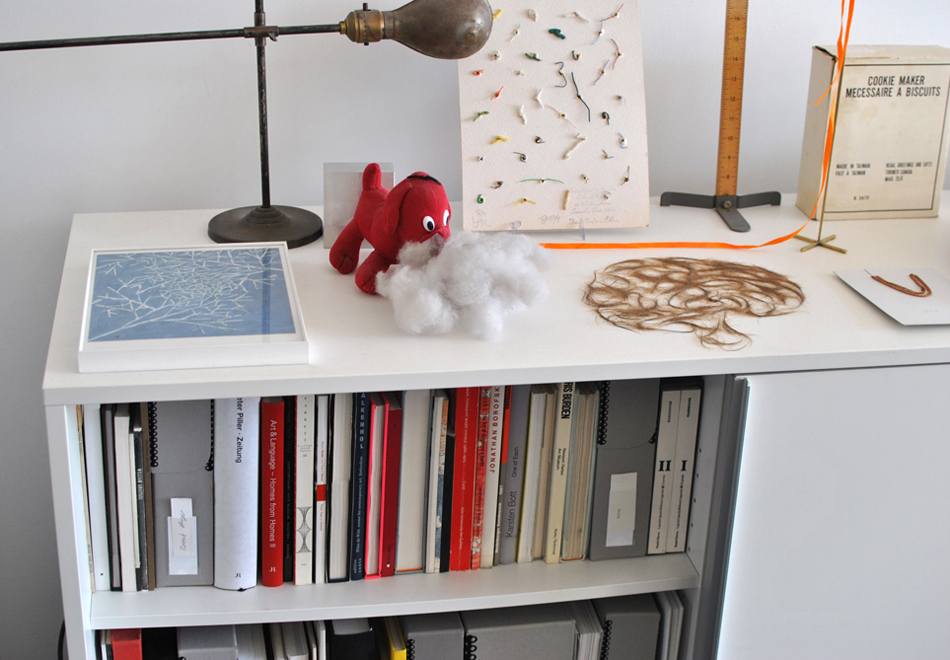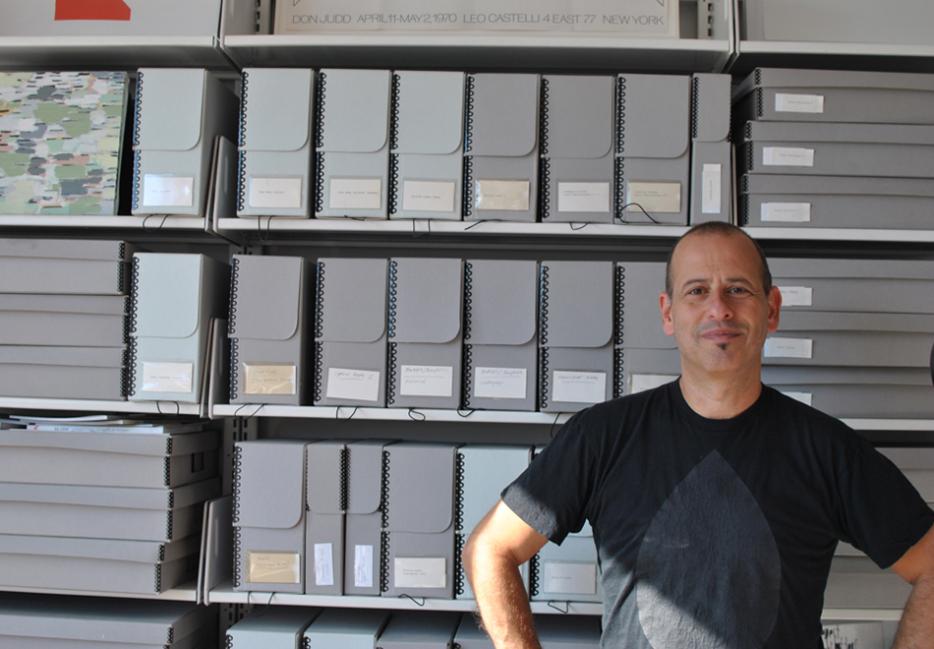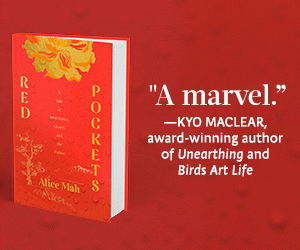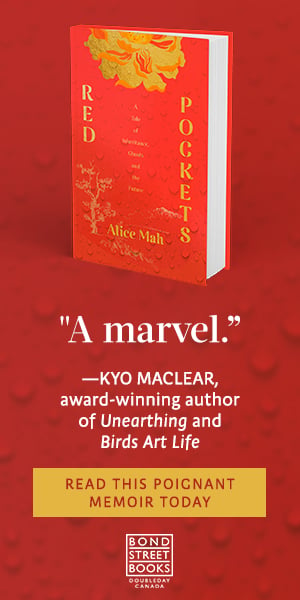Shelf Esteem is a weekly measure of the books on the shelves of writers, editors, and other word lovers, as told to Emily M. Keeler. This week’s shelf belongs to Micah Lexier, the Toronto-based artist whose retrospective recently opened at the Power Plant. Lexier frequently works in collaboration with writers, and his pieces with Colm Tóibín, Derek McCormack, and Christian Bök are included in the show, One, and Two, and More Than Two. Lexier has a famously dynamic practice, and much of his art takes its inspiration from books and their formal contents. I spoke with him where his books—and bookworks—live, in his Queen West apartment.
I have three categories for books. The first is monographs, things organized alphabetically by artist. A to Z by artist in here. I’ve lived in different places, and when I moved to Toronto, the dilemma was, do I leave my books out so that I can see them and interact with them, or do I put them away so that I can protect them a little bit? I’ve ruined the spines of books, living in a house that had a lot of light in it.

I found this one on the street. You know what it was? There was a larger box, and they must have been packing something, and they wanted people to know that this box here is just to occupy a lot of space so the thing won’t shift. Don’t bother opening it, there’s nothing inside, it’s just an empty box. It’s amazing. I feel like I’m the luckiest guy in the world because I find these incredible things. What are the chances of seeing a box that says empty box? And it’s real! That’s the best part. It’s not art. It’s just an empty box.
Shelf Esteem runs every Tuesday.




